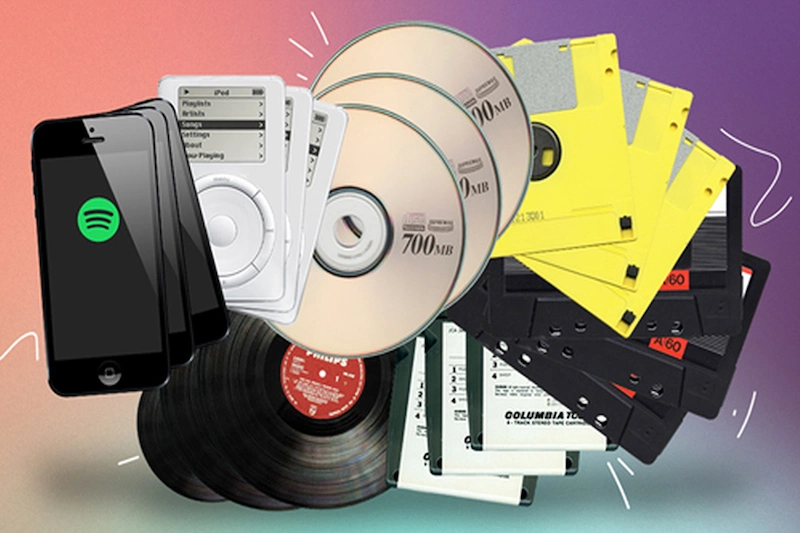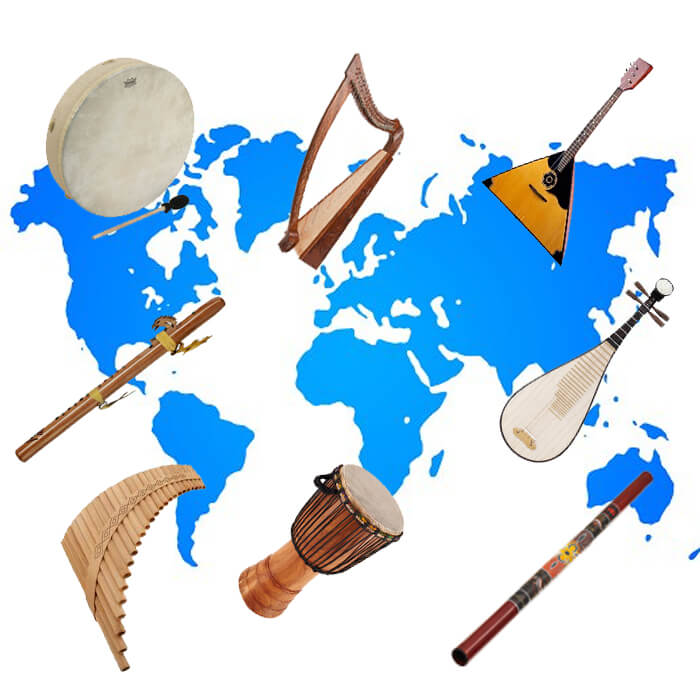From Vinyl to Streaming:
The way we listen to music has changed over time in the always changing environment of music consumption. This article takes you on a historical tour of the numerous music formats that have influenced our musical experiences, from the analog allure of vinyl albums to the digital ease of streaming services.
The Vinyl Era (H2)
The Birth of Vinyl (H3)
In the latter half of the 19th century, the vinyl record, also known simply as “vinyl,” was introduced. Originally composed of shellac, vinyl replaced shellac as the primary material by the middle of the 20th century because of its sturdiness and greater sound quality. Vinyl records came in a variety of sizes, with the most popular being the 7-inch single and 12-inch LP (Long Play).
The Vinyl Renaissance (H3)
Throughout the latter half of the 20th century, vinyl records saw a spike in popularity thanks to collectors and audiophiles who valued the warmth and depth of analog sound. Due to this comeback, both new and used vinyl records were produced, resulting in a thriving market for vinyl collectors.
The Cassette Tape Era (H2)
The Portable Revolution (H3)
Music gained a new degree of portability in the 1960s with the invention of cassette recordings. Cassette tapes’ portability and inexpensive cost made it possible for music fans to make mixtapes and take their favorite songs with them wherever they went. A portable cassette player called the Walkman significantly advanced listening to music while on the go.
The Mixtape Culture (H3)
Cassette tapes played a significant role in shaping the mixtape culture. People would create personalized playlists for themselves or as gifts for friends and loved ones. The act of crafting a mixtape became an art form, showcasing the curators’ musical tastes and emotions.
The CD Era (H2)
Digital Clarity (H3)
The Compact Disc (CD) arrived in the 1980s, heralding a digital revolution in music. CDs offered crystal-clear audio quality, resistance to wear and tear, and the ability to skip tracks seamlessly. This format quickly overtook vinyl and cassettes in popularity.
The Age of CD Collections (H3)
CDs gave rise to the era of CD collections. Music enthusiasts built vast libraries of their favorite albums, often showcasing them on prominent display shelves. The CD era also introduced the concept of bonus tracks and enhanced content, making the physical format more appealing to consumers.
The Digital Download Era (H2)
The Birth of Digital Downloads (H3)
With the advent of the internet, the music industry witnessed a monumental shift. Digital downloads emerged as a convenient way to purchase and own music. Services like iTunes allowed users to buy individual songs or entire albums, changing the way we acquired music.
The Demise of Physical Media (H3)
As digital downloads gained popularity, physical formats started to decline. CD sales dropped, and some record stores shuttered their doors. The convenience of digital music files and the ability to carry thousands of songs on a portable device became the norm.
The Streaming Revolution (H2)
Access Over Ownership (H3)
The streaming era, which began in the early 2010s, completely transformed the music industry. Services like Spotify, Apple Music, and Tidal offered vast libraries of songs that users could stream on-demand, shifting the focus from ownership to access.
The Playlist Culture (H3)
Streaming platforms introduced the concept of curated playlists. Users could discover new music through algorithmic recommendations and user-generated playlists. This fostered a global music-sharing culture and allowed artists to reach wider audiences.
Conclusion (H2)
A Multifaceted Journey (H3)
The history of music formats is a multifaceted journey, reflecting not only advancements in technology but also the evolving preferences of music enthusiasts. From the warmth of vinyl to the convenience of streaming, each format has left its mark on how we experience and appreciate music.
The Future of Music (H3)
As technology continues to evolve, the future of music formats remains uncertain. What’s clear is that music will continue to adapt to the digital age, and new formats and platforms will emerge. The journey from vinyl to streaming is a testament to the enduring power of music to connect, inspire, and evolve with the times.
In summary (H4):
- Vinyl records, known for their warmth, had a resurgence in popularity.
- Cassette tapes brought portability and the mixtape culture.
- CDs offered digital clarity and the era of collections.
- Digital downloads changed music acquisition and ownership.
- Streaming services prioritized access over ownership and introduced playlist culture.
- The future of music formats remains uncertain, but music’s evolution continues.
In the ever-evolving world of music, the formats may change, but the love for music remains a constant thread that connects generations and transcends technological advancements.





